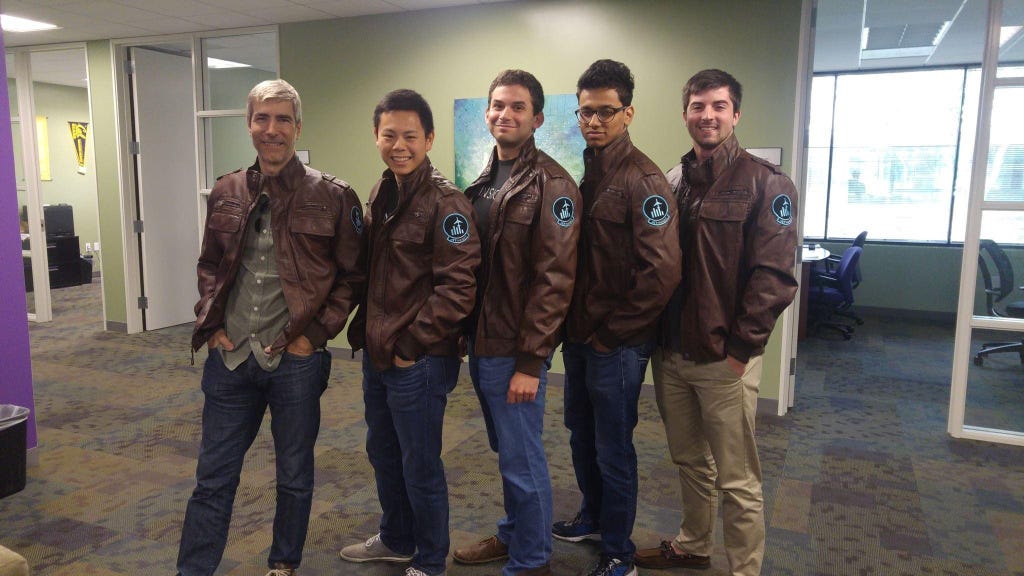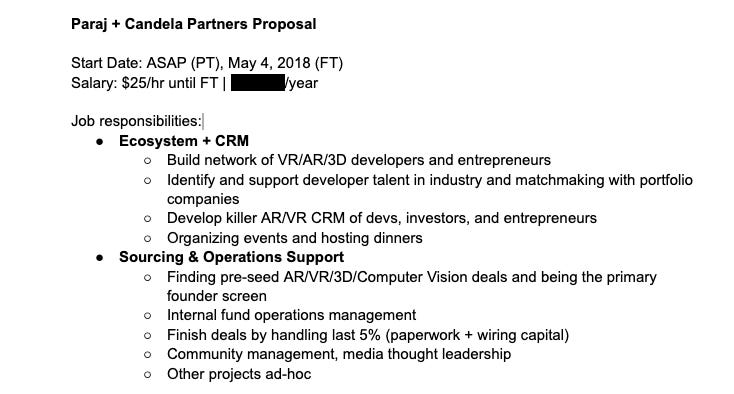Becoming a VC
Growing up in a middle class family in India, entrepreneurship was not even in the universal set of career options I could aspire to. Everyone in my family was an engineer. Entrepreneurship or starting a business was not even remotely in my cultural consciousness. Let alone venture capital. In fact, I didn’t even fully know or understand what venture capitalists do, and how the industry works until junior year of college.
Now, in retrospect, I realize how fortunate I have been to break into venture early, given how opaque the industry can seem, how competitive, and how people from privileged backgrounds only have to hit a free throw to win the game. It can feel daunting, and I want to share my journey on how I built connections, built assets, and got into VC from scratch. The goal is for you to see that you can do it too.
I was the first person from my family to ever travel abroad when I moved to the US to attend Franklin & Marshall College. It was an exciting privilege I couldn’t have afforded without the extreme generosity of the financial aid I received. Once here, I had everything planned out. Major in Business and Computer Science. Get an MBB internship. Graduate into a management consulting career. Until I actually got my first consulting internship and realized within the first week that in fact, I did NOT want to do consulting. But now my entire plan was falling apart and I didn’t know what I wanted to do instead.
Given my interests in tech and business, I was curious about startups and Silicon Valley, but I lived across the country near Philly. But hey, the internet is the great equalizer. I would spend my entire day on AngelList and Product Hunt. I probably went through every single company on AL and I would email every cool new product that launched on PH asking how I could help. Any time a company looked interesting, I would spend a few hours doing research on them and their competitors and then wrote a one page summary on my findings along with 3 product and marketing ideas. After over 500 cold emails, I got some bounce backs (didn’t guess the right email) and some thanks but no thanks (I am sure my recommendations weren’t actually that revolutionary, I was 19).

But most importantly, I got 5-10 personal, responses from CEOs which turned into 5 zoom calls and eventually 2 summer internship offers. I broke into tech! Ended up spending one summer in SV and since I couldn’t afford to live near the office on an intern’s salary, was living in the East Bay commuting 2.5 hours each way to get to work and back.

I loved every moment of it. Looking back, it was a transformative experience, both being in the valley at a high growth startup and learning from a great founding team (👀 JetInsight and RoomStory), but also gave me a taste of life in VC — discovering great companies, engaging and building relationships with great founders, and helping them! Then, I was helping as an intern. Now, as an investor.
Back on campus as a junior, hyper-energized after my experience in the valley, I was determined to bring that same energy, serendipity, and innovation to F&M. First, I thought the best way was for me to start a company on campus myself, so I started a peer-to-peer storage marketplace called SimplyStow (RIP). While I learned a lot about the ins and outs of building and shipping products and acquiring customers, I also realized that the better way to leave a more long lasting impact on the ecosystem would be to encourage and support other students to be entrepreneurial as well. So I started a pitch contest and workshop series on campus to encourage students to take risks, go through the design thinking process and come out of the sessions with a startup MVP. As I went about designing the program, my professors connected me with several F&M alumni who were either running their own startups, were angel investors, or venture capitalists. After talking to 4-5 VCs, it clicked for me — I want to spend my time finding ambitious entrepreneurs and helping them start and grow companies. Quickly, it seemed, I had gone from “What is VC”, to “holy s*** this is exactly what I want to do, and have been trying to do at F&M”.
I raised a small amount of money (<$5k) from alumni and academic departments to offer as prize money for the pitch contest and led its full scale launch on campus. Got a lukewarm, yet encouraging response. I found my tribe of entrepreneurial students, albeit small. 5 teams registered to go through the workshops and pitch. Six weeks later, they pitched to an audience of 50 students and a panel of professors, angels, and startup founders. It was a success, at a small level.
To build on this success, I went back to VC alumni I had spoken to and started volunteering my time to help them. I spent my free time researching companies that fit their thesis and started taking first calls with founders, taking notes, and building a rolodex of companies in Airtable which I would share with them every week.
Halfway through my senior year, while deep in job application mode, I got my offer to join the APM program at Google. It was a phenomenal opportunity, one that I am eternally grateful for, but I was determined to work in venture. So I sent Larry and Don, VCs I was in contact with, a proposal. I even wrote my own job description myself.


Fortunately, they took a massive bet on me and accepted my proposal and I started working at Candela Partners, first in school, and then, after college, in San Francisco.
Fast forward to today, now I am in Atlanta, focusing on seed investments at BIP Capital. Looking back at my journey, could not have done it without the constant support of my advisors, mentors, friends, and parents (even though my parents still don’t fully understand what I do for work). I am genuinely deeply passionate about helping early stage entrepreneurs and grateful that I have had the opportunity to do so and so I want to spend my spare time paying it forward!
After seeing my journey and those of my friends in venture, I would breakdown the playbook like this:
- Have a deep passion for entrepreneurship and helping founders — this is a people business and a service business. Go above and beyond for people.
- Write on the internet — I didn’t leverage this as well, but it is the easiest way to show how you think about industries and startups and a great way to fake it till you make it. Prove you can think like a VC by writing about it online.
- Take Initiative,Build an asset — Create something valuable. This could be a blog, a community, or even an event series in your city. Something on the internet or in person that is helpful to founders or investors and attracts them to it. I built a community of founders on Discord.
- Become a super connector — Three types of networks are vital for VC. Depending on what stage you want to focus on: founders, other investors (same stage, upstream, or downstream), and talent/advisors/high profile customers. Build genuine relationships and make connections where you see fit. It will go a long way.
- Be active on Twitter — This is where all the smart founders and investors are hanging out.
- Fake VC Portfolio (optional) — I didn’t do this, but Turner Novak hit a homerun with this. To really prove you can be a VC, show you can spot and pick companies early with conviction. Maintain a public fake portfolio and track its success over time and use that to build your track record as an investor.
I know it’s a VC meme – “how can I be helpful”, but most junior VCs I know got in exactly that way, by going above and beyond with founders, investors, and their own personal projects. Plus luck. Hopefully, my journey gives you a rough playbook for how to think about the paths into venture capital.